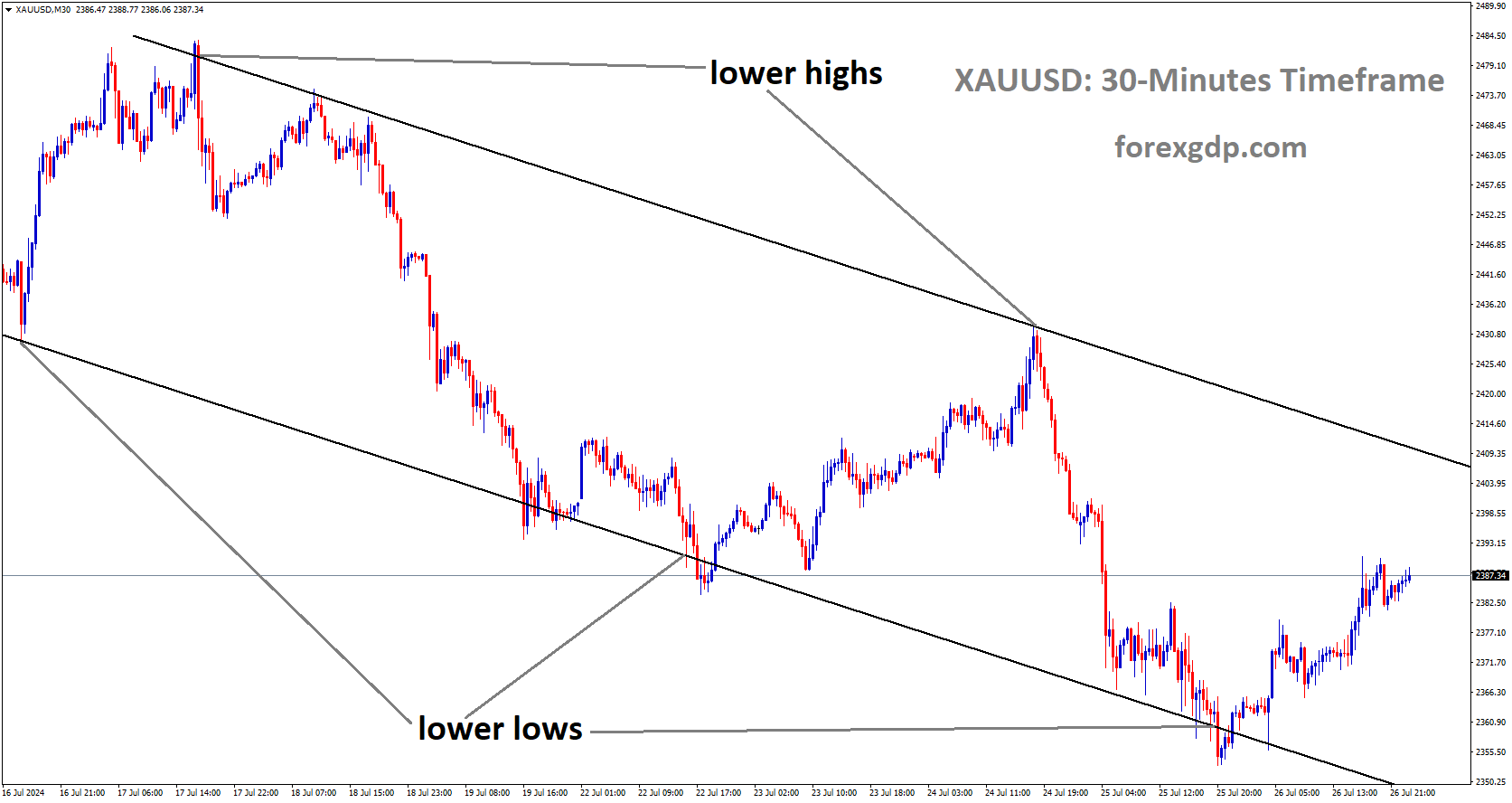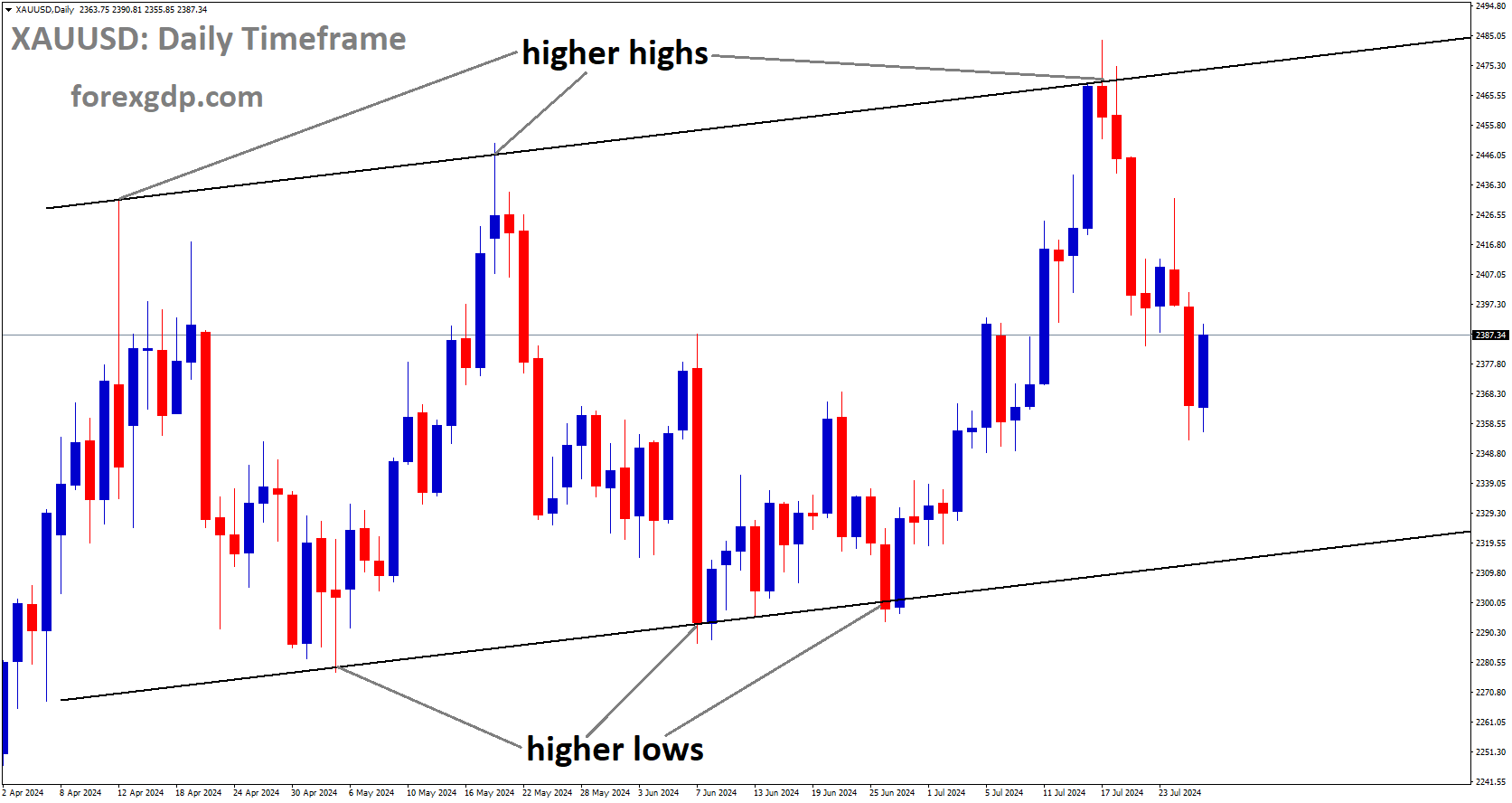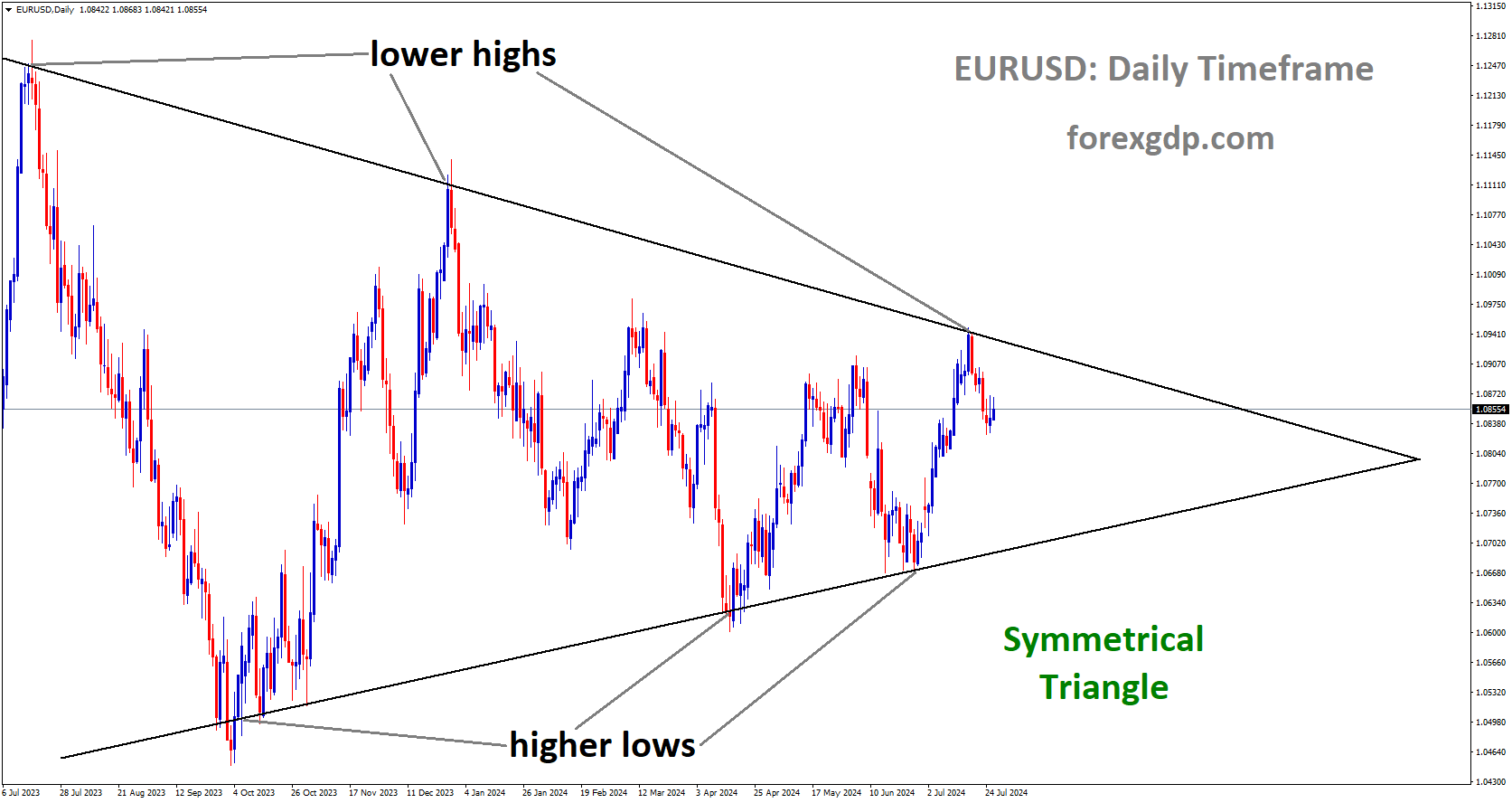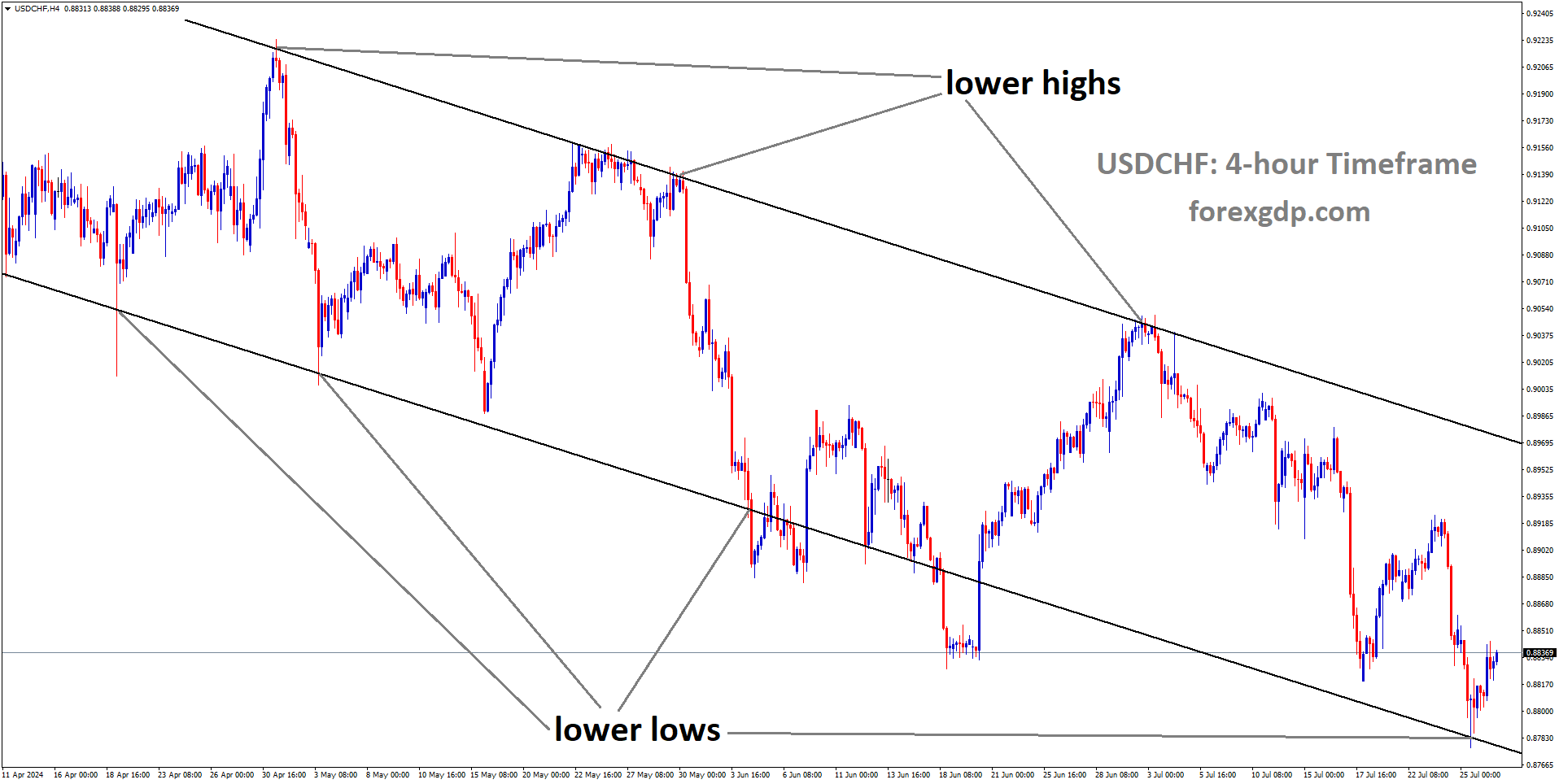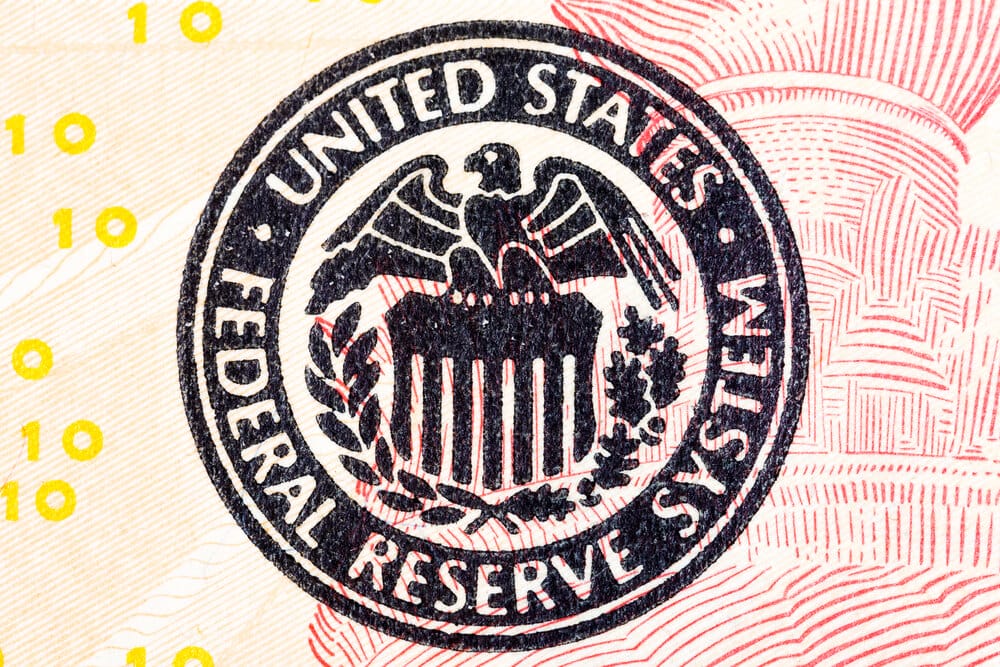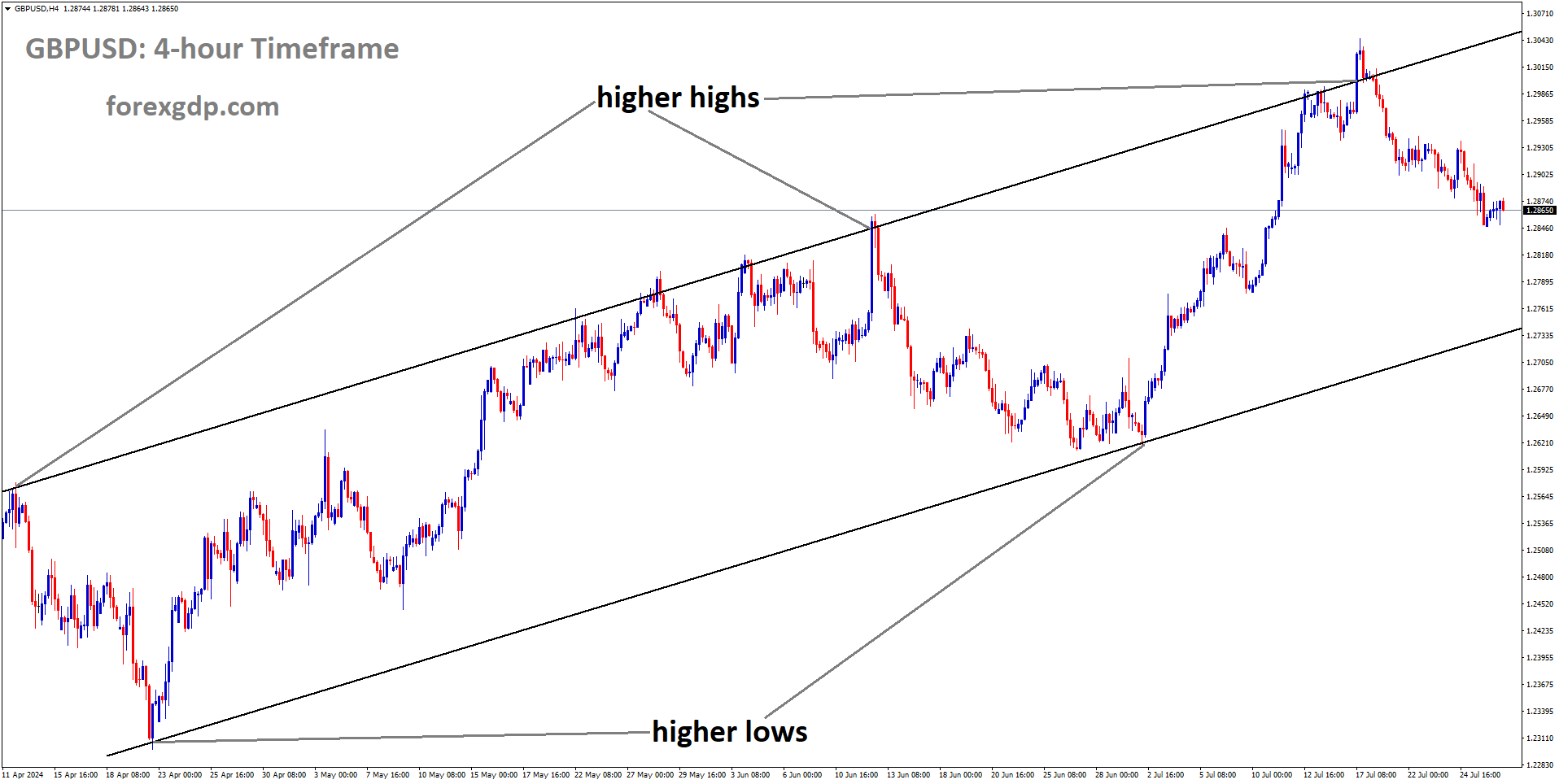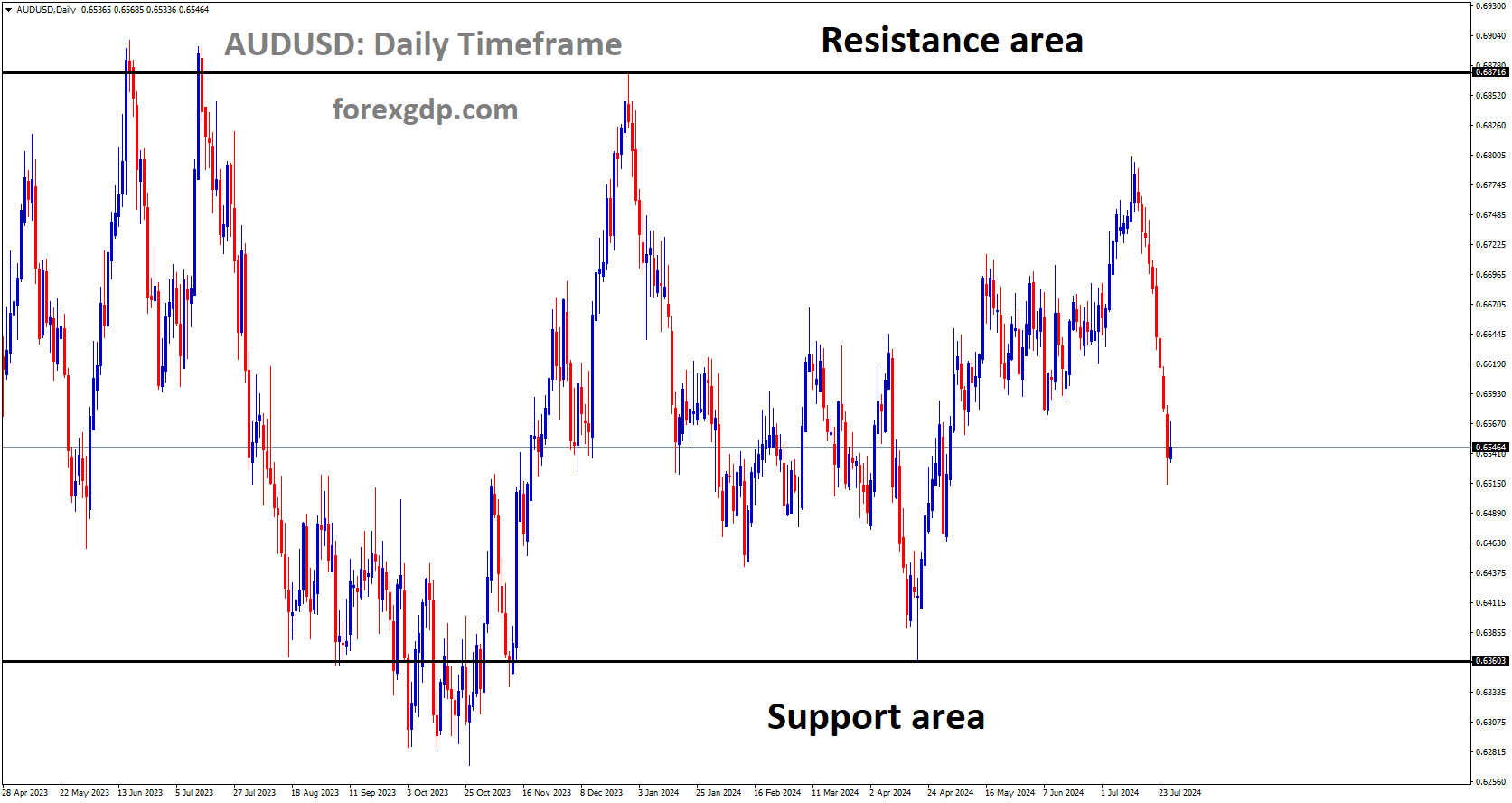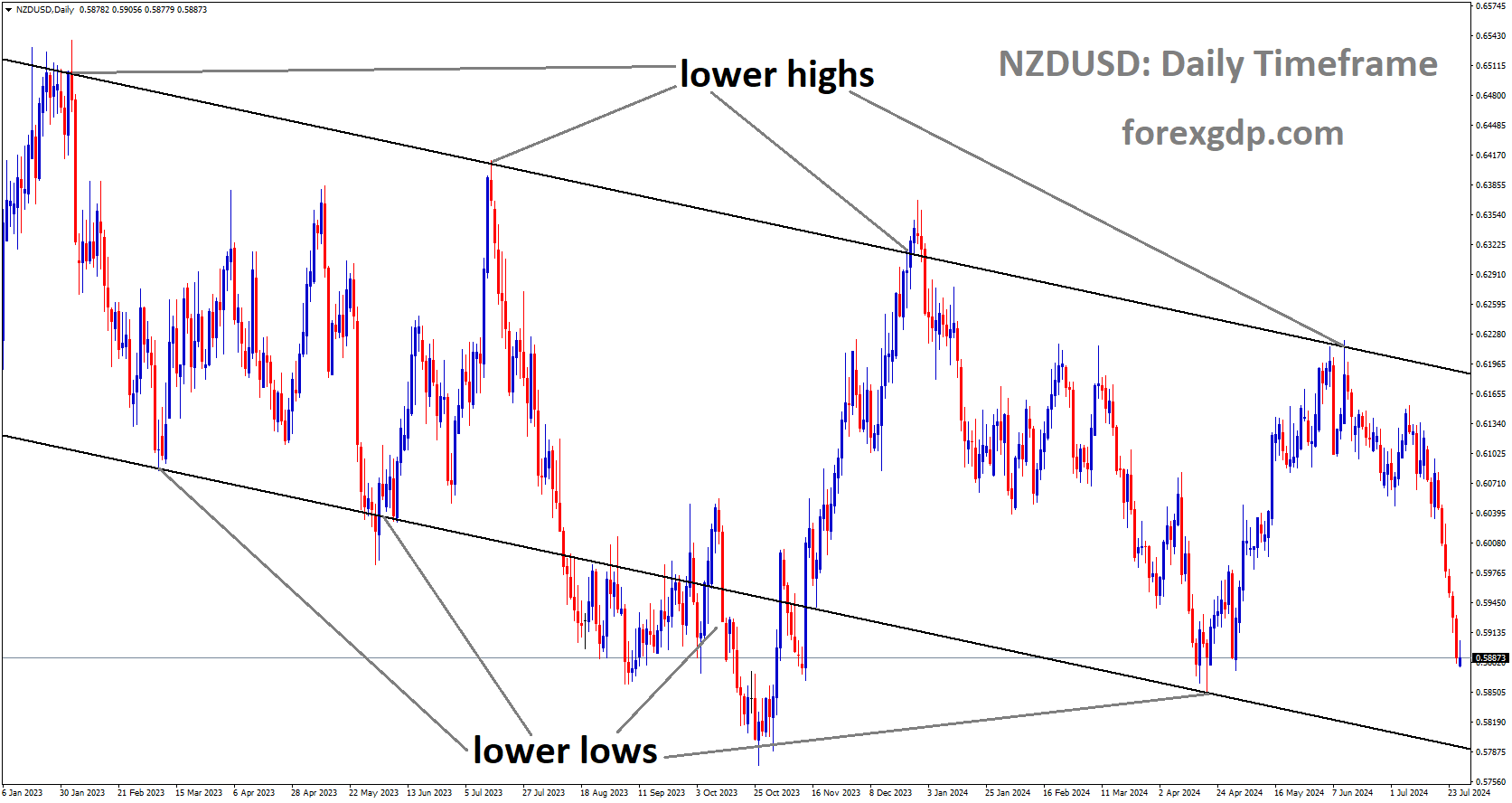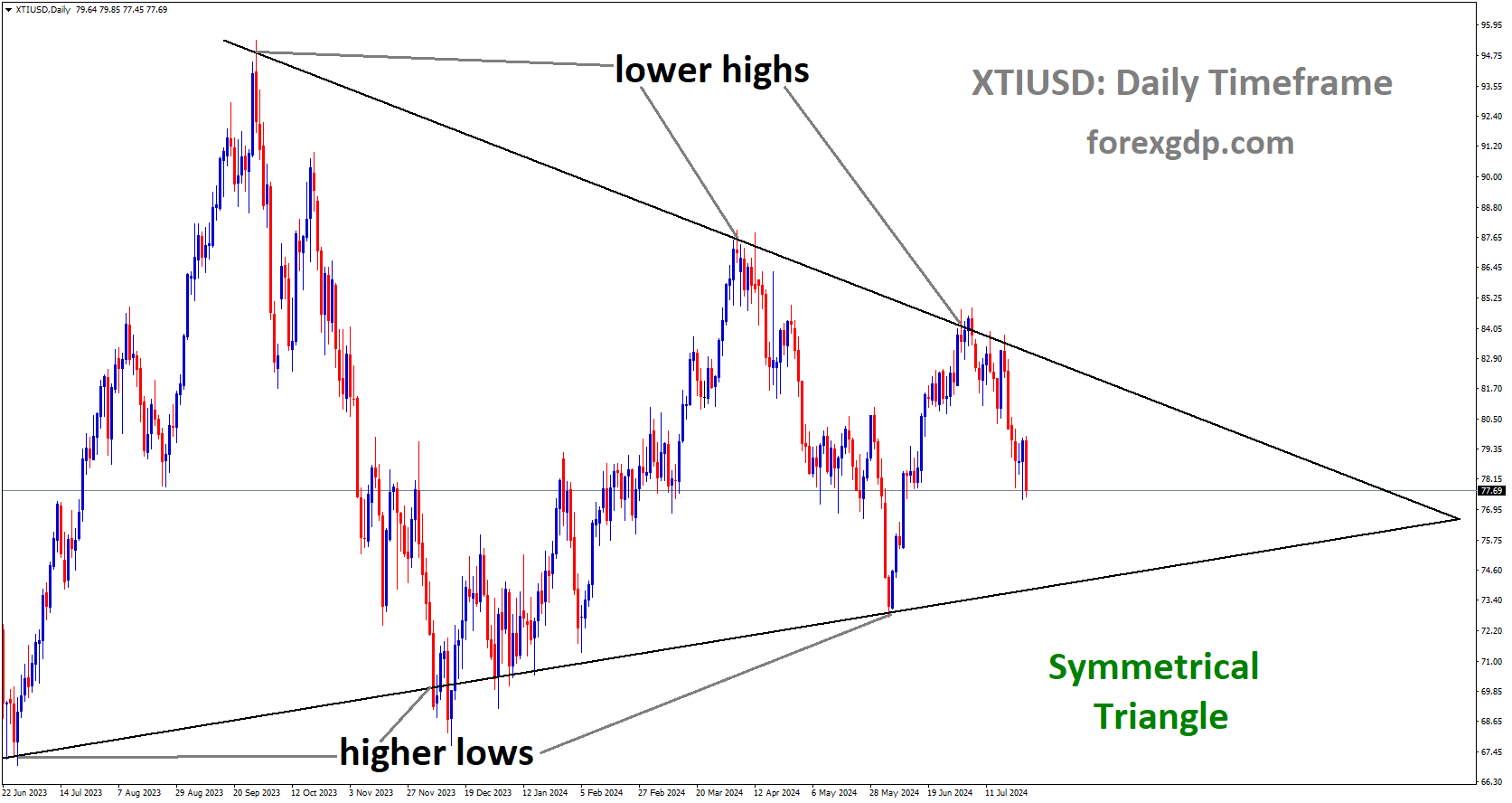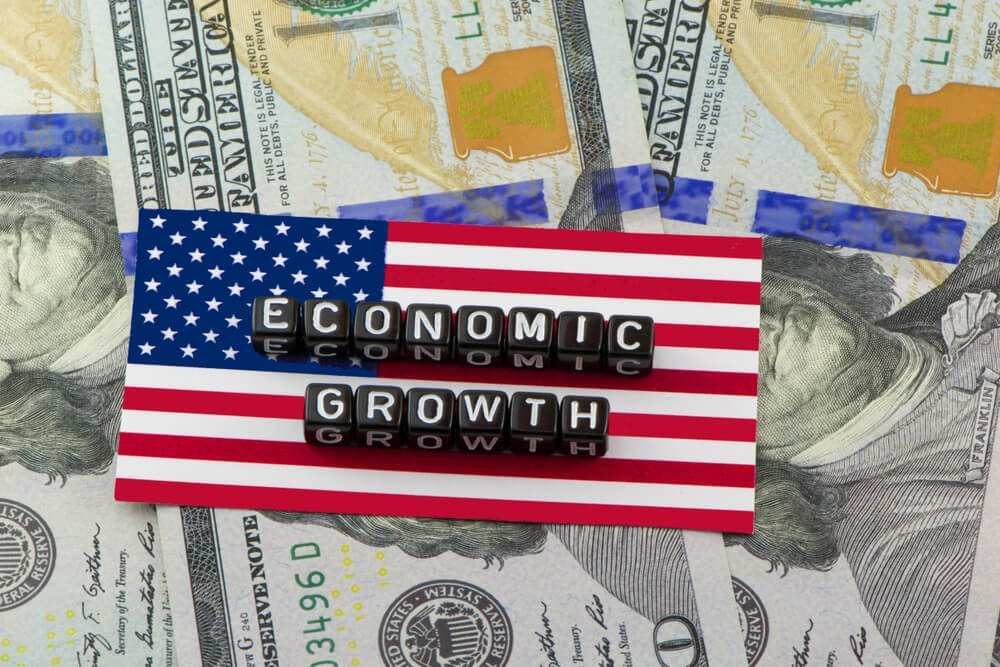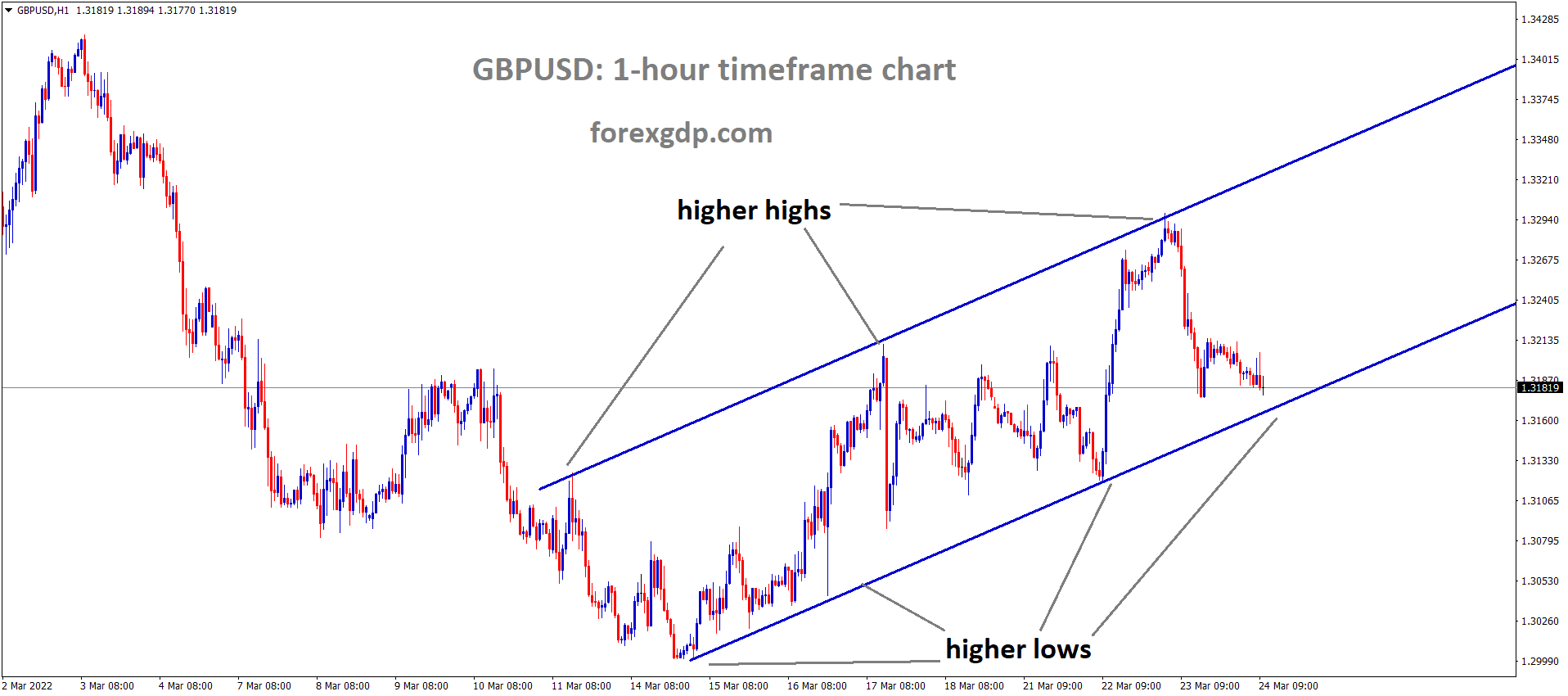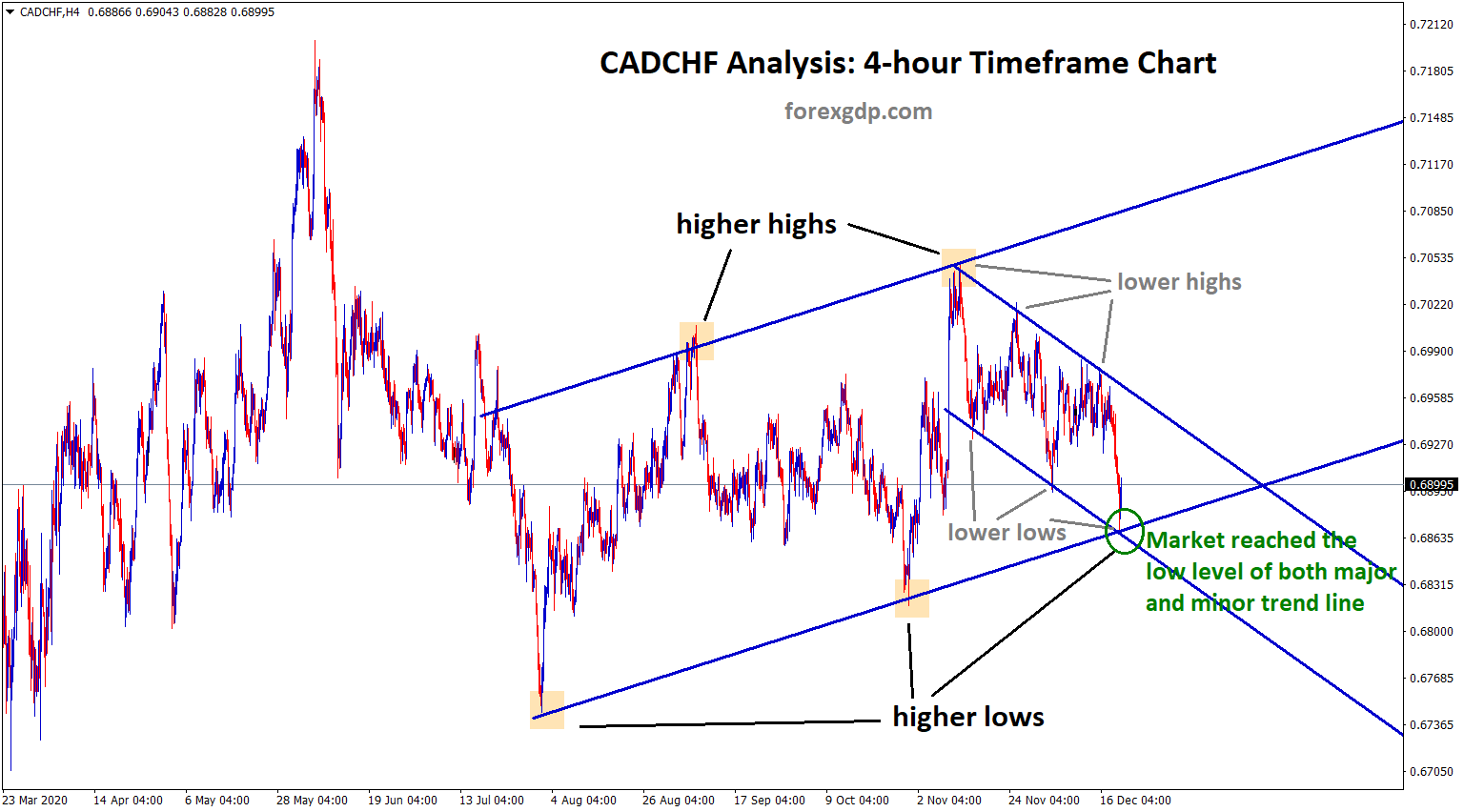GOLD – Weak Dollar Boosts Gold: Market Awaits Fed’s Upcoming Decision
Gold Price Rebounds Amid Economic Shifts: What You Need to Know
Gold prices have shown a significant rebound from their recent daily lows, moving from $2,356 to $2,385. This movement in gold prices comes amidst mixed signals from the Fed’s preferred inflation gauge and a noticeable slump in US Treasury yields. As the market anticipates potential rate cuts by the Federal Reserve, let’s delve into the factors driving these changes and what they mean for you.

Understanding the Recent Gold Price Movement
A Bounce Back from Lows Gold prices recently took a dive, hitting a two-week low of $2,353. However, it didn’t stay there for long. With market participants feeling confident about the Federal Reserve’s potential interest rate cuts in September, gold prices made a U-turn. Now trading at $2,385, gold has risen approximately 0.80% from its recent lows.
XAUUSD is moving in Descending channel and market has rebounded from the lower low area of the channel
The Inflation Gauge and Its Impact
Mixed Results from the PCE The US Bureau of Economic Analysis (BEA) released data showing that the Personal Consumption Expenditure Price Index (PCE), which the Federal Reserve closely monitors, has shown mixed results. Monthly, the PCE ticked up slightly higher than May’s data, while on a yearly basis, it dipped but remains close to the Fed’s 2% target.
Core PCE Insights In June, the Core PCE rose by 0.1% monthly and remained unchanged year-over-year. These figures were above projections, indicating persistent inflationary pressures. Despite this, the data suggests that inflation and economic activity might be slowing down, which could prompt the Fed to cut rates twice this year.
US Treasury Yields and Fed Rate Cuts
Bonds Rally, Yields Slump Following the inflation data, US bonds saw a rally, causing US Treasury yields to slump. The 10-year note, for instance, slid by 4.5 basis points to 4.202%. This decline in yields signals that the market is preparing for potential rate cuts by the Federal Reserve.
Economic Activity and Rate Cut Speculation Reuters sources suggest that the recent mixed-to-weaker US data indicates waning inflationary pressures and economic activity. This environment is paving the way for the Federal Reserve to consider cutting rates twice this year. The next Fed meeting is expected to maintain current rates, but it could set the stage for a rate cut in September.
XAUUSD is moving in Ascending channel and market has fallen from the higher high area of the channel
Weekly Market Movers: Key Economic Indicators
US PCE Data
- The US PCE for June rose by 0.1% month-over-month and 2.5% year-over-year, meeting expectations. The annual rate dropped from 2.6%.
- Core PCE increased by 0.2% month-over-month and remained steady at 2.6% year-over-year, exceeding estimates and May’s figures.
Consumer Sentiment
- The University of Michigan Consumer Sentiment survey’s final reading jumped to 66.4, although it missed projections of 66.
- One-year inflation expectations decreased from 3% to 2.9%, while five-year expectations remained steady at 3%.
Trader Insights Data from the Chicago Board of Trade (CBOT) indicates that traders are pricing in 55 basis points of easing towards the end of the year, as shown by the December 2024 fed funds rate futures contract.
Final Summary
The recent rebound in gold prices, coupled with mixed inflation data and a slump in US Treasury yields, highlights the dynamic nature of the current economic landscape. As we anticipate the Federal Reserve’s upcoming monetary policy decisions, the potential for interest rate cuts looms large. This environment offers both challenges and opportunities for investors and market participants. Stay informed and adaptable to navigate these changes effectively.
EURUSD – EUR/USD Edges Up Slightly on Friday, Fails to Cross 1.09
EUR/USD Sees Modest Gains But Faces Downward Pressure: What’s Next?
EUR/USD had a bit of a roller coaster ride last week. While it managed to gain some ground on Friday, it still ended the week in the red, continuing a two-week losing streak. The currency pair is grappling with market sentiment heavily influenced by hopes for a Fed rate cut and upcoming key inflation data from the EU. Let’s dive into what’s happening and what to watch for in the coming days.
EUR/USD’s Recent Performance: A Closer Look
Last week, EUR/USD managed a slight gain of about 0.2% on Friday. However, this small uptick wasn’t enough to offset the overall weekly decline. The currency pair has been on a downward trend, losing around 1.12% over the past two weeks. This movement reflects the broader market sentiment as investors gear up for critical announcements from the Federal Reserve and the European Central Bank.
Key EU Inflation Data on the Horizon
What to Expect from the HICP Figures
Next week, all eyes will be on the Harmonized Index of Consumer Prices (HICP) inflation figures from the EU, set to be released on Wednesday. This data is crucial as it provides insights into the inflation landscape across the eurozone. Investors are particularly interested in this update because it will help gauge the likelihood of another rate cut from the ECB.
In June, the ECB implemented a 25 basis point rate cut, and the upcoming HICP figures will be pivotal in determining whether another cut is on the cards. The year-over-year headline HICP inflation for July is anticipated to ease to 2.3%, down from the previous 2.5%. This slight reduction could influence the ECB’s next moves and investor sentiment towards the euro.
Why This Matters
Understanding the HICP figures is vital for anyone involved in the forex market. These numbers offer a glimpse into the overall economic health of the eurozone and can significantly impact EUR/USD trading. Lower inflation rates might prompt the ECB to adopt a more dovish stance, potentially weakening the euro.
The Federal Reserve’s Rate Call: What’s at Stake?
Anticipating the Fed’s Decision
On the other side of the Atlantic, the Federal Reserve is also gearing up for its rate call, scheduled for Wednesday. The consensus among market participants is that the Fed will keep rates unchanged in July. However, any shifts in the Fed’s rhetoric or unexpected changes in policy could have a substantial impact on the market.
EURUSD is moving in Symmetrical Triangle and market has fallen from the lower high area of the pattern
Investors will be paying close attention to the Fed’s commentary, looking for clues about future monetary policy. The upcoming Nonfarm Payrolls data, set to be released on Friday, will also be crucial. This data point is essential for assessing the odds of a rate adjustment in September.
Key Economic Indicators to Watch
- PCE Inflation: In June, the underlying US Personal Consumption Expenditures (PCE) inflation remained steady at 2.6% on an annualized basis, defying expectations of a slight decrease to 2.5%. This stability suggests that inflationary pressures in the US are persistent.
- Consumer Sentiment: The University of Michigan’s Consumer Sentiment Index dropped to 66.4 in July, an eight-month low. Although this decline was not as severe as anticipated, it indicates a dip in consumer confidence, which could influence the Fed’s decision-making process.
Market Sentiment and Expectations
Reading the Market’s Mood
Despite the various economic indicators pointing towards potential inflationary pressures, the market concluded last Friday that the data did not warrant significant concern. This sentiment shift saw investors gravitating towards riskier assets, maintaining hopes for a rate cut in September.
The CME’s FedWatch Tool shows that the rate markets are still pricing in an unchanged stance from the Federal Open Market Committee (FOMC) for July, with a 100% likelihood of at least a 25-basis-point cut on September 18. Interestingly, there is also a 12% probability of a 50 basis points reduction, reflecting some optimism among market participants for a more aggressive cut.
Investor Takeaways
For forex traders, understanding these dynamics is critical. The interplay between the ECB’s and the Fed’s policy decisions will shape the trading landscape for EUR/USD. Staying informed about economic indicators and market sentiment can provide valuable insights for making informed trading decisions.
Final Summary
The EUR/USD currency pair is navigating a complex landscape shaped by expectations of central bank actions and key economic data releases. While it saw some gains last Friday, the overall trend remains bearish. The upcoming HICP inflation figures from the EU and the Federal Reserve’s rate call are pivotal events that could influence the pair’s direction.
For traders, keeping an eye on these developments is crucial. The market sentiment, shaped by inflation expectations and central bank rhetoric, will play a significant role in determining the future movement of EUR/USD. Stay tuned and be prepared to adapt your strategies based on the latest economic indicators and central bank announcements.
USDJPY – Yen Swings Wildly Amid US Inflation Data Anticipation
Japanese Yen Faces Challenges Ahead of Key Economic Data Releases
The Japanese Yen (JPY) is under pressure as we approach some crucial economic data releases, particularly from the US. With the Tokyo Consumer Price Index (CPI) data recently published and the upcoming Bank of Japan (BoJ) meeting, there’s a lot of attention on how these factors will influence the Yen. Meanwhile, the US Dollar (USD) is holding steady, buoyed by strong economic indicators that have reduced the likelihood of an imminent rate cut by the Federal Reserve.
Current State of the Japanese Yen
Tokyo Consumer Price Index Insights
The Statistics Bureau of Japan’s latest release of the Tokyo CPI data shows mixed results. The headline Tokyo CPI for July saw a year-over-year increase of 2.2%, which is a slight decrease from the previous 2.3% rise. This dip indicates a potential cooling in inflationary pressures. Notably, the Tokyo CPI excluding Fresh Food and Energy rose by 1.5% YoY, down from 1.8%. However, the CPI excluding Fresh Food increased by 2.2% in July, aligning with market expectations.
These CPI figures suggest that while inflation remains a concern, the pace may be slowing slightly. This scenario adds a layer of complexity for the BoJ as it prepares for its policy meeting.
Bank of Japan’s Policy Meeting: What to Expect
Potential Interest Rate Adjustments
The BoJ’s upcoming two-day policy meeting is a significant event that could influence the Yen’s trajectory. During this meeting, the board will discuss the possibility of raising interest rates and will provide details on tapering its extensive bond purchase program. Any hints at tightening monetary policy could lend support to the Yen as traders might unwind their carry trades in anticipation of higher returns from Japanese assets.
Global Influences on the Yen
US Dollar Dynamics and Economic Indicators
The US Dollar is currently supported by robust economic data. Recent reports, including the US Gross Domestic Product (GDP) for the second quarter and the Purchasing Managers’ Index (PMI), highlight a resilient US economy. The GDP grew at an annualized rate of 2.8%, surpassing forecasts and the previous reading. Additionally, the PMI data pointed to faster expansion in private-sector activity, suggesting that the US economy is maintaining its growth momentum despite elevated interest rates.
USDJPY is moving in Descending channel and market has fallen from the lower high area of the channel
These positive economic indicators have reduced market expectations for a rate cut by the Federal Reserve in September. According to the CME Group’s FedWatch Tool, the probability of a 25-basis point rate cut at the September Fed meeting has decreased from 94.0% to 88.6%. This shift in expectations supports the USD, limiting its downside and indirectly impacting the JPY.
Insights from Financial Leaders
Masato Kanda’s Remarks on FX Volatility
Japan’s top currency diplomat, Masato Kanda, addressed the G20, expressing concerns over foreign exchange (FX) volatility’s adverse effects on the Japanese economy. He emphasized the importance of closely monitoring the economy and implementing necessary measures to mitigate these impacts. Kanda’s comments underscore the delicate balance Japan faces in managing its currency and broader economic health.
Market Movers and Predictions
Bank of America and JP Morgan’s Perspectives
Bank of America highlights the strong footing of the US economy, suggesting that the Federal Open Market Committee (FOMC) can afford to wait before making any changes to interest rates. This stance indicates a belief in the sustained strength of the US economy, which further supports the USD.
On the other hand, JP Morgan anticipates no rate hike from the BoJ in July or at any point in 2024. Their analysis suggests that it is too early to take a bullish stance on the Yen, given the current economic conditions and the BoJ’s likely cautious approach.
Japan’s Economic Assessment
Government and BlackRock Investment Insights
The Japanese Cabinet Office has maintained its economic assessment unchanged for July but has warned of a bleak outlook. The government has downgraded its evaluation of exports, noting stagnation. This cautious stance reflects ongoing concerns about Japan’s economic recovery and external trade dynamics.
The BlackRock Investment Institute remains optimistic about Japan’s equity market, citing the country’s economic recovery and rising inflation. However, they do not expect the BoJ to raise interest rates at the next meeting, aligning with broader market expectations.
Summary
The Japanese Yen is navigating a complex landscape of domestic economic indicators and global financial dynamics. The upcoming BoJ policy meeting and the release of key US economic data, such as the Personal Consumption Expenditures (PCE) Price Index, will be crucial in shaping the Yen’s direction. While the Yen faces challenges, particularly from a strong US Dollar backed by robust economic data, potential policy shifts by the BoJ could provide some support. As traders and analysts keep a close eye on these developments, the interplay between the Yen and the Dollar will remain a focal point in the currency markets.
USDCAD – Canadian Dollar Struggles on Quiet Friday, Eyes Turn to US Data
The Canadian Dollar: A Detailed Look at Recent Trends and Future Prospects
The Canadian Dollar (CAD) has been making headlines recently, and not always for the best reasons. As the week wraps up, let’s dive into the factors influencing its performance and what lies ahead for Canada’s currency.
The Current State of the Canadian Dollar
CAD Faces Challenges in Global Markets
On Friday, the Canadian Dollar struggled to find its footing, declining against most of its major currency counterparts. This trend comes as global markets remain fixated on US inflation data. The primary question on everyone’s mind is whether the Federal Reserve (Fed) will implement a rate cut in September, a move that markets have already factored in.
Bank of Canada’s Recent Actions
In 2024, the Bank of Canada (BoC) has implemented two quarter-point rate cuts. However, traders seem to be in a holding pattern, waiting for more significant Canadian economic data to be released. The anticipation is building for the Canadian inflation data expected in the latter part of August, but until then, the outlook is relatively quiet, with only mid-tier data on the horizon.
Market Influencers: US Inflation Data
Impact of US Personal Consumption Expenditures (PCE) Inflation
One of the main market movers has been the US Personal Consumption Expenditures (PCE) Price Index, which recently failed to meet expectations. Despite this, investors remain confident, with a September rate cut from the Fed seen as a certainty. The Core US PCE inflation for the year ending in June stayed at 2.6% year-over-year, contrary to market forecasts of a slight decrease to 2.5%.
Consumer Sentiment and Inflation Expectations
Another critical piece of data is the University of Michigan (UoM) Consumer Sentiment Index, which dipped less than anticipated to 66.4, down from the previous 68.2 but still above the forecast of 66.0. Additionally, there was a slight increase in the UoM 5-year Consumer Inflation Expectations for July, which ticked up to 3.0% from 2.9%. These figures have kept investors engaged, despite the mixed signals they present.
Upcoming Economic Indicators
What to Watch: Canadian GDP and US Nonfarm Payrolls
Next week, two significant economic indicators are set to be released: the Canadian Gross Domestic Product (GDP) and the US Nonfarm Payrolls (NFP). Both figures are expected to show a slight decline, which could have varying impacts on the CAD.
USDCAD is moving in box pattern and market has reached resistance area of the pattern
Mid-Tier Canadian GDP Data
The Canadian GDP data, set for release on Tuesday, is expected to be a mid-tier event. While it may not cause major market upheavals, it will provide insights into the overall health of the Canadian economy. Traders and investors will be watching closely to gauge whether the Canadian economy is maintaining momentum or starting to slow down.
US Nonfarm Payrolls (NFP)
The US NFP data is another critical piece of the puzzle. Historically, this data has a significant impact on market sentiment and currency movements. A weaker-than-expected NFP report could reinforce the likelihood of a Fed rate cut, potentially influencing the CAD’s performance.
Final Summary
As we wrap up this detailed look at the Canadian Dollar’s recent performance and future prospects, it’s clear that a combination of domestic and international factors is at play. The CAD has faced headwinds, primarily due to uncertainties surrounding US inflation data and the anticipated actions of the Federal Reserve. Meanwhile, the Bank of Canada’s recent rate cuts and the lack of significant Canadian economic data have kept traders in a state of anticipation.
Looking ahead, the upcoming Canadian GDP and US Nonfarm Payrolls data will be crucial in shaping the CAD’s trajectory. Investors and traders should keep a close eye on these indicators to make informed decisions. As always, staying updated with the latest economic trends and data releases is essential in navigating the ever-changing landscape of global currency markets.
USDCHF – Rebounds Bulls Charge as Bears Pause at 0.8830
USD/CHF Inches Higher: What It Means for Traders
The USD/CHF has seen a slight uptick after experiencing two consecutive sessions of losses. The trading session on Friday saw the USD/CHF close up by 0.15%, landing around 0.8830. This movement happened amidst mixed signals from the US Personal Consumption Expenditures (PCE) numbers, providing a bit of relief for traders who had been seeing a steady decline.
Understanding the Impact of US PCE Figures
The Personal Consumption Expenditures (PCE) Price Index is a key indicator of inflation in the US. In June, the PCE Price Index showed a slight decline to 2.5% on a year-on-year basis, down from 2.6% in May. These figures, released by the US Bureau of Economic Analysis, aligned with market expectations.
USDCHF is moving in Descending channel and market has rebounded from the lower low area of the channel
Year-on-Year and Monthly Analysis
On a month-to-month basis, the PCE Price Index saw a 0.1% rise after remaining unchanged in May. The core measure of PCE, which excludes volatile food and energy prices, rose by 2.6% YoY, slightly above the expected 2.5%. This indicates that while there is some disinflation, certain segments of the economy are still experiencing price increases.
The Federal Reserve’s Dovish Stance
The recent PCE figures suggest that inflation is cooling, albeit slowly. This has led to the perception that the Federal Reserve might not rush into cutting the funds rate aggressively. Currently, the Fed Funds futures indicate nearly three cuts of more than 60 basis points by December 2024, with a total easing of 136 basis points projected over the next year.
Market Sentiment and the Fed’s Future Actions
Given the robust growth and mild disinflation in the US economy, there is room for an upward revision of the Fed funds rate expectations. This could potentially strengthen the USD and increase Treasury yields, thereby prompting an upward movement in the USD/CHF pair.
Navigating the Forex Market with USD/CHF Movements
For traders, understanding these economic indicators and their implications is crucial. The recent upward movement of USD/CHF, after a period of losses, signals the importance of keeping an eye on economic data and Federal Reserve announcements.
Key Takeaways for Traders
- Monitor Economic Indicators: Keeping track of key economic indicators like the PCE Price Index can provide insights into market trends and potential movements in currency pairs.
- Understand the Fed’s Position: The Federal Reserve’s stance on interest rates significantly impacts the forex market. A dovish or hawkish tone from the Fed can lead to substantial changes in currency values.
- Stay Updated: Regularly updating oneself with the latest economic data and market sentiment can help in making informed trading decisions.
Summary
The USD/CHF’s slight rise to 0.8830 after two sessions of losses underscores the complex interplay of economic indicators and market sentiment. The mixed signals from the US PCE figures and the steady dovish bets on the Federal Reserve present a challenging yet opportunistic environment for traders. By staying informed and understanding these dynamics, traders can navigate the forex market more effectively.
GBPUSD – Sterling Struggles: GBP/USD Ends Another Tough Week Despite Late Rally
GBP/USD Struggles as Pound Sterling Faces BoE Rate Cut Concerns
The GBP/USD pair faced challenges on Friday, reflecting broader market anxieties. The Pound Sterling has been on shaky ground, with everyone eyeing the upcoming Bank of England (BoE) rate decision. Let’s dive into what’s happening with GBP/USD and what it means for traders.
The GBP/USD Rollercoaster
On Friday, GBP/USD inched up by a mere 0.13%. Despite this slight gain, the pair ended the week down by 0.5%, marking the second consecutive week of losses. This decline is notable as it follows a 12-month high for the pair, just above 1.3000.
Why the Struggles?
The primary reason for this sluggish performance is the widespread expectation of a rate cut from the BoE next week. This anticipation has weighed heavily on the Pound Sterling, making it difficult for GBP/USD to gain significant ground.
What’s Happening with the BoE?
The BoE is anticipated to announce a quarter-point rate cut on Thursday. This would be the first cut since March 2020. If this happens, the UK’s main benchmark rate will decrease from 5.25% to 5.0%.
Why a Rate Cut?
The BoE’s decision is driven by a mix of economic factors, including inflation and consumer sentiment. The UK’s economic landscape has been turbulent, and the BoE aims to stabilize it by adjusting the interest rates.
US Economic Indicators Impacting GBP/USD
Across the pond, the Federal Reserve (Fed) is also in the spotlight. Investors expect the Fed to maintain its current rates in the upcoming meeting but are hopeful for a rate cut in September. This anticipation influences market sentiment and, by extension, GBP/USD movements.
Core US PCE Inflation
In June, core US PCE inflation remained steady at 2.6% year-over-year, contrary to expectations of a decrease to 2.5%. Month-over-month, PCE inflation rose to 0.2% from the forecasted 0.1%. This suggests persistent inflationary pressures, which could affect future rate decisions.
GBPUSD is moving in Ascending channel and market has fallen from the higher high area of the channel
Consumer Sentiment Index
The University of Michigan’s Consumer Sentiment Index fell to an eight-month low of 66.4 in July, slightly above the anticipated 66.0 but below the previous 68.4. Additionally, the UoM 5-year Consumer Inflation Expectations rose to 3.0% in July from 2.9%.
Market Reactions and Expectations
Despite these inflationary signs, the market has leaned towards a risk-on sentiment, hoping for a rate cut from the Fed in September. The CME’s FedWatch Tool indicates a 100% probability of a rate hold on July 31 and a 25-basis-point rate cut on September 18. There’s even a 12% chance of a 50-basis-point cut in September.
Why the Optimism?
Traders and investors are looking for any sign of relief from the high interest rates that have been in place to combat inflation. A rate cut could spur economic activity, which is why there’s so much hope riding on the Fed’s and BoE’s decisions.
Looking Ahead: What Should Traders Expect?
With the BoE’s rate decision looming and the Fed’s next steps closely watched, the GBP/USD pair is in for some interesting times. Traders should keep an eye on the following:
- BoE Rate Decision: A quarter-point cut is expected. Any deviation could significantly impact GBP/USD.
- Fed’s September Meeting: While a hold is expected in July, the September meeting could bring a rate cut. Traders should stay alert for any updates or changes in sentiment.
- Economic Indicators: Inflation rates, consumer sentiment, and other economic indicators will continue to play a crucial role in shaping market expectations and movements.
Final Thoughts
The GBP/USD pair’s recent struggles highlight the complex interplay of economic factors and market expectations. With the BoE and Fed poised to make critical decisions, traders should brace for potential volatility. Staying informed and ready to adapt to new information will be key in navigating the coming weeks.
By keeping an eye on central bank actions and economic indicators, traders can make more informed decisions. The next few weeks promise to be eventful, and staying ahead of the curve will be crucial for anyone involved in the GBP/USD market.
EURGBP – Euro Slips as Pound Strengthens on BoE Rate Cut Hopes
EUR/GBP: What’s Next for This Currency Pair?
The EUR/GBP currency pair has been showing some mild gains recently, hovering around the 0.8440 mark. Let’s dive into what’s been happening and what might be next for these currencies. We’ll explore some key factors influencing the pair, without getting bogged down by technical analysis.
BoE Rate Cut Speculations: What It Means for GBP
Investors Eye BoE’s Next Move
A lot of buzz surrounds the Bank of England (BoE) and its potential interest rate decisions. There’s a growing belief that the BoE might reduce its borrowing costs, which are currently at a 16-year high. Many are looking forward to the policy meeting on August 1, anticipating this change. This has a significant impact on the Pound Sterling (GBP).
Predictions and Market Sentiments
UBS analysts have been vocal about their expectations, predicting a 25 basis points (bps) cut in early August, followed by another 25 bps in November. This would bring the interest rate down to 4.75% by the end of 2024. According to them, recent economic data is a major factor driving these expectations. The current market sentiment shows a 45% chance of a quarter-point rate cut at the upcoming policy meeting.
European Business Confidence: The Downward Spiral
French and German Economic Concerns
Across the channel, the European Central Bank (ECB) faces its own challenges. A decline in business confidence in France and Germany is stirring fears of an economic downturn. The latest data from the German IFO Institute revealed a drop in business confidence from 88.6 in June to 87 in July, marking its lowest point since February. This decline was worse than economists’ forecasts, which predicted a slight drop to 88.9.
EURGBP is moving in Descending channel and market has reached lower high area of the channel
Potential ECB Rate Cuts
Given these worrying signs, there’s speculation that the ECB might consider cutting interest rates in September. The economic health of the Eurozone’s two biggest economies, France and Germany, plays a crucial role in this decision. With both nations showing signs of a slowdown, the ECB may feel pressured to act.
Looking Ahead: Eurozone GDP and Economic Indicators
Upcoming GDP Data
One of the next big pieces of economic data to watch is the preliminary Eurozone Gross Domestic Product (GDP) for the second quarter (Q2). This data will offer insights into the broader economic health of the region. The quarterly GDP number is expected to show an expansion of 0.2% QoQ in Q2, slightly down from the previous reading of 0.3% QoQ.
Implications for EUR/GBP
The GDP data, along with any forthcoming announcements from the BoE and ECB, will likely influence the EUR/GBP pair’s movement. Traders and investors will be keenly observing these updates to adjust their strategies accordingly.
Summary: Navigating the EUR/GBP Landscape
To sum it up, the EUR/GBP pair is in a state of flux, influenced by potential interest rate cuts from both the BoE and ECB. The Pound is under pressure due to expectations of a BoE rate cut, while the Euro faces its own challenges with declining business confidence in key economies. Upcoming GDP data will further shape the outlook. For those keeping an eye on this currency pair, staying updated with these economic indicators and central bank announcements will be crucial.
AUDUSD – Australian Dollar Stumbles: Commodity Crash and Risk-Averse Market
Australian Dollar Sees a Slight Recovery Amidst Persistent Economic Concerns
The Australian Dollar (AUD) had a slight rebound on Friday, but it’s still struggling as one of the worst-performing currencies among the G10 nations. Several factors are contributing to this underperformance, including falling commodity prices and ongoing economic challenges in China. On the other hand, the US Dollar (USD) remains steady despite mixed economic data. Let’s dive deeper into what’s affecting the AUD and what might lie ahead for this currency.
Why the Australian Dollar Struggles
Impact of Falling Commodity Prices
The Australian economy is heavily reliant on commodity exports, particularly iron ore. When commodity prices fall, as they have recently, it negatively impacts the Australian Dollar. Iron ore prices have been dropping, mainly due to decreased demand from China. As China’s economy shows signs of slowing down, the demand for industrial metals, including iron ore, has weakened. This directly hits Australia’s export revenues and, consequently, the AUD.
China’s Economic Woes
China, being Australia’s largest trading partner, plays a significant role in the performance of the AUD. The recent rate cuts by the People’s Bank of China (PBoC) have sparked fears about the health of the Chinese economy. These concerns add to the risk-off sentiment surrounding the AUD. When investors are worried about the global economy, they tend to shy away from riskier currencies like the AUD, preferring safer assets instead.
The Role of the Reserve Bank of Australia
Delay in Rate Cuts
Despite the economic vulnerabilities, the Reserve Bank of Australia (RBA) has been delaying rate cuts. One of the main reasons for this is the persistently high inflation in Australia. The RBA’s hawkish stance means that it might be one of the last central banks among the G10 nations to implement rate cuts. This approach could potentially support the AUD by limiting its further depreciation.
AUDUSD is moving in box pattern and market has fallen from the resistance area of the pattern
Potential Rate Hikes
There is also speculation about a potential rate hike by the RBA in the fourth quarter of this year. Market bets indicate nearly a 50% chance of a rate hike either in September or November. If the RBA indeed goes ahead with a rate hike, it could provide a boost to the AUD, at least in the short term.
Market Sentiment and the Path Forward
Risk-Off Sentiment
The overall market sentiment towards the AUD remains risk-off. This is largely due to the concerns over the Chinese economy and the AUD’s status as a high-risk currency. Investors are cautious, and this sentiment is keeping the AUD under pressure. However, any positive news from China or a shift in the RBA’s stance could change this sentiment quickly.
What to Watch For
Going forward, there are several factors that could influence the AUD. First, keep an eye on commodity prices, especially iron ore. Any signs of recovery in commodity prices could provide support to the AUD. Second, monitor the economic data coming out of China. If the Chinese economy starts to show signs of recovery, it could boost the AUD. Finally, watch the RBA’s policy decisions closely. Any hints of a rate hike could give the AUD a much-needed lift.
Final Summary
The Australian Dollar is navigating through challenging times, weighed down by falling commodity prices and economic concerns in China. While the RBA’s hawkish stance and potential rate hikes offer some hope, the overall market sentiment remains cautious. Investors are watching closely for any signs of recovery in commodity prices or positive developments in the Chinese economy. In the meantime, the AUD’s path will likely remain rocky, influenced by the interplay of these key factors.
NZDUSD – NZD/USD Buyer Interest Wanes, Stuck Under 0.5900 as US PCE Approaches
NZD/USD Gains Temporary Momentum: What You Need to Know
The NZD/USD pair recently experienced a minor recovery after hitting a three-month low. While this slight uptick has been encouraging, it hasn’t yet translated into sustained buying momentum. Let’s dive deeper into the factors influencing this currency pair, what to watch out for, and how it might perform in the coming days.
Factors Influencing NZD/USD Movement
Safe-Haven USD Under Pressure
A key element supporting the NZD/USD pair is the weakening of the US Dollar (USD). The USD is often seen as a safe-haven currency, attracting investors during times of economic uncertainty. However, various factors have recently undermined its strength.
Fed Rate Cut Speculation
Speculation surrounding the Federal Reserve’s (Fed) policy moves has been a significant driver. Investors are increasingly betting on the Fed starting a rate-cutting cycle soon. Many believe that the Fed might lower borrowing costs as early as September and potentially implement two more cuts by the year’s end. This sentiment has been a headwind for the USD, providing a boost to the NZD/USD pair.
Positive Market Sentiment
The overall positive tone in the equity markets has also played a role in supporting the NZD. When stock markets perform well, investor risk appetite increases, often benefiting risk-sensitive currencies like the New Zealand Dollar (NZD).
China’s Economic Challenges
Despite the positive sentiment in the equity markets, concerns about China’s economic health persist. As the world’s second-largest economy, any slowdown in China can have a ripple effect on global markets. For New Zealand, which has strong trade ties with China, these economic woes could pose a challenge, potentially capping further gains for the NZD/USD pair.
Key Data to Watch: US PCE Price Index
One of the most anticipated data points is the US Personal Consumption Expenditures (PCE) Price Index. Scheduled for release later today, this index is a crucial indicator of inflation and is closely monitored by the Fed. The results could provide fresh insights into the Fed’s future policy path and significantly impact USD demand.
Impact on Fed Policy
Should the PCE Price Index show higher-than-expected inflation, it could prompt the Fed to rethink its rate-cutting strategy, potentially strengthening the USD. Conversely, if inflation remains subdued, it would reinforce expectations for upcoming rate cuts, keeping the USD under pressure and possibly aiding the NZD/USD pair.
NZDUSD is moving in Descending channel and market has fallen from the lower high area of the channel
Market Sentiment and Investor Bets
US Economic Data
Recent US economic data has been somewhat mixed. On the one hand, the US economy grew faster than expected in the second quarter of 2024. On the other, the number of initial jobless claims dropped slightly, suggesting a still-strong labor market. Despite these positive indicators, the persistent rate-cut speculation has overshadowed the data, keeping USD bulls at bay.
RBNZ Rate Cut Expectations
Adding another layer of complexity is the Reserve Bank of New Zealand (RBNZ). Market participants are increasingly betting on an early interest rate cut by the RBNZ. This expectation has been bolstered by a weaker Consumer Price Index (CPI) report from New Zealand, which could limit the upside for the NZD/USD pair.
What to Expect Moving Forward
The NZD/USD pair’s future movement will likely be influenced by several interrelated factors, including US inflation data, Fed policy moves, and China’s economic performance.
US PCE Price Index Release
The immediate focus will be on the US PCE Price Index. Traders will closely watch the data, and any surprises could lead to significant market reactions.
China’s Economic Developments
China’s economic health remains a critical factor. Any signs of recovery or further slowdown could directly impact the NZD, given New Zealand’s economic ties with China.
Equity Market Sentiment
Continued positive sentiment in the equity markets could support risk-sensitive currencies like the NZD. However, any shift towards risk aversion could bolster the USD, reversing some of the recent gains in the NZD/USD pair.
Summary
In summary, the NZD/USD pair has seen some recovery after hitting a three-month low, but several factors will influence its path forward. The weakening USD, driven by Fed rate cut expectations and positive market sentiment, has provided some support for the NZD. However, China’s economic challenges and potential rate cuts by the RBNZ could cap further gains. All eyes are now on the upcoming US PCE Price Index, which will likely provide fresh direction for the NZD/USD pair. Stay tuned for this key data release and its potential impact on the market.
Crude Oil – Oil Prices Struggle to Stabilize, Commerzbank Observes
Brent Crude Oil Prices: What’s Driving the Market?
Oil prices have been a hot topic lately, with Brent crude hovering just over $80 a barrel. Let’s dive into the factors affecting these prices, especially considering the recent fluctuations. In this article, we’ll break down the key elements driving the market, focusing on demand concerns, inventory levels, and significant market movements.
Oil Prices Under Pressure
Demand Concerns
One of the primary reasons oil prices have faced pressure is due to demand concerns, particularly from China. The country’s demand for oil has been underwhelming, leading to a decrease in overall market confidence. This lackluster demand has put a damper on prices, as traders and investors worry about the global demand outlook.
US Market Influence
Despite the concerns from China, the US market has provided some stability. American consumers have shown consistent demand, which has helped prevent a more significant drop in prices. The US inventory report played a crucial role in this, indicating that crude oil inventories fell more sharply than usual. This drop in inventories, which are now 5% lower than the typical levels for this time of year, has helped sustain prices above the $80 mark.
US Inventory Levels and Their Impact
Crude Oil Inventories
The fall in US crude oil inventories has been a critical factor in supporting oil prices. This decline suggests that demand is outpacing supply, which is a positive sign for price stability. With inventories being 5% lower than the seasonal average, it signals a tighter supply situation in the market, which typically supports higher prices.
XTIUSD is moving in Symmetrical Triangle and market has fallen from the lower high area of the pattern
Gasoline Inventories
In addition to crude oil, US gasoline inventories have also seen a significant decline. Over the past week, gasoline inventories fell by 5.5 million barrels. This drop was primarily due to a notable recovery in US gasoline demand, which reached a new high for the year at just under 9.5 million barrels per day. This surge in demand has provided a solid foundation for crude oil prices, contributing to their resilience above the $80 mark.
Factors Behind the Gasoline Demand Surge
- Travel and Commuting PatternsWith more people returning to offices and travel restrictions easing, there’s been an increase in commuting and travel. This has naturally boosted gasoline consumption, leading to higher demand and lower inventories.
- Economic RecoveryThe US economy has been showing signs of robust recovery, which in turn drives up energy consumption. Higher economic activity generally translates to increased transportation and industrial usage of gasoline.
The Role of Economic Growth
Positive US Growth Figures
Another crucial factor that has supported oil prices is the positive economic growth figures from the US. Recently released data indicated surprisingly good growth, which has bolstered market confidence. This economic growth suggests a higher demand for energy, including oil, which has helped keep prices stable.
Impact on Oil Prices
The positive economic indicators have provided a boost to oil prices, pushing them back above the $82 mark towards the end of the week. This recovery in prices reflects the market’s optimism about future demand, driven by economic expansion and increased consumer activity.
Summary
Oil prices have remained above the $80 mark due to a combination of factors. Despite demand concerns from China, the US market has provided stability through consistent consumer demand and declining inventory levels. The significant drop in US gasoline inventories, driven by a surge in demand, has also played a vital role. Additionally, positive economic growth figures from the US have supported market confidence and helped sustain oil prices.
Understanding these dynamics is crucial for anyone interested in the oil market. By keeping an eye on demand trends, inventory levels, and economic indicators, you can better anticipate price movements and make informed decisions. The interplay of these factors will continue to shape the oil market in the coming months.
Don’t trade all the time, trade forex only at the confirmed trade setups
Get more confirmed trade signals at premium or supreme – Click here to get more signals , 2200%, 800% growth in Real Live USD trading account of our users – click here to see , or If you want to get FREE Trial signals, You can Join FREE Signals Now!


